A slow, but sure way to grow LOTS of garlic
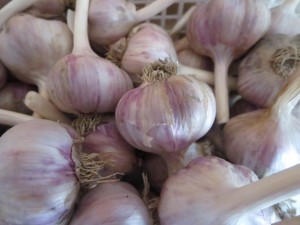
These small bulbs can be used as regular garlic or planted out one more time to size up bigger. Photo: Lucy Martin
Fellow gardeners who grow their own garlic may be confronting an annual conundrum right around now. The harvest is here, with lovely bulbs to dry and eat. But some has to be saved to plant in the fall for next year’s crop.
Eat or plant? Doing one feels like stealing from the other. I always felt like there just wasn’t quite enough for either purpose.
Last spring I wrote about one way to get around that tug-of-war: use bulbils.
At the time I spoke from partial theory. I’d heard “Fish Lake Garlic Man” Ted Maczka demonstrate bulbil multiplication at the Perth Garlic festival in 2011. This consists of NOT trimming off the so-called flower stalks, or scapes that grow on hard-neck garlic.
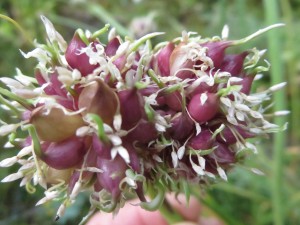
What grows if the scape of hard-neck garlic is left to fully develop: lots of bulbils. As a bonus, they are beautiful to behold! Photo: Lucy Martin
By letting some of these fully develop, you get heads with bulbils that range from the size of rice to pomegranate seeds, depending on the variety involved.
I confess, I found the ones the size of rice just too exasperating to bother with. (Sometimes size does mater.) I played around with the bigger bulbils and feel they deliver a reasonable return on space. Growing and replanting bulbils has a number of advantages: they are cleaner – usually free of soil-borne disease, very cheap to produce and an easy way to boost your count.
The main disadvantage is how slow it can be. It can take several growing cycles to get to the bulb size produced in one season of conventional planting (by clove).
Anyway, I’ve been giving that a try. This year, as I deal with my harvest in early August, I can finally say “Whoa, Nelly! That’s enough garlic!” Indeed, that’s more than enough. I have garlic aplenty, to eat, plant and share. And you can too.
In my case I’ll also be sharing surplus with friends who recently moved to a large country property where they’ll have lots of space and time to pursue a self-sufficiency life style. They can plant out a big bed and be rolling in garlic – in not too long a time – at zero cost.
Here come the photos to illustrate how this worked in my garden. (Note: For those who want more info I’ve found this commercial outlet in B.C. an excellent source of details on all things garlic, including propagating with bulbils.)
——————————————-
POSTSCRIPT (Monday Aug 12)
I regret to add I just learned that long-time garlic evangelist from Ontario’s Prince Edward County, Ted Maczka, died on Dec 30, 2013.
Here is an obituary from the Toronto Star, in which his daughter, Barbara Campbell called him the Jonny Appleseed of garlic in Canada:
“He pioneered this,” Campbell said. “Nobody else was doing anything in garlic back in the ’70s.”
RIP “Fish Lake Garlic Man”!
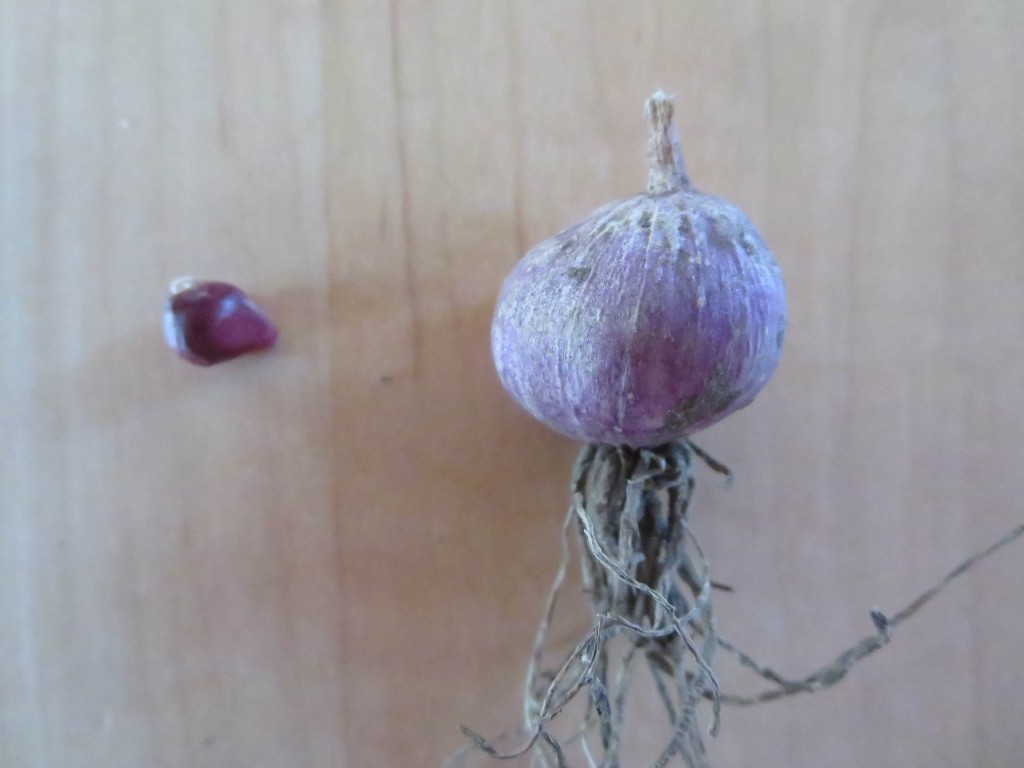
The next step: plant the wee one in the fall. By spring it’ll be the size of a small radish. Photo Lucy Martin
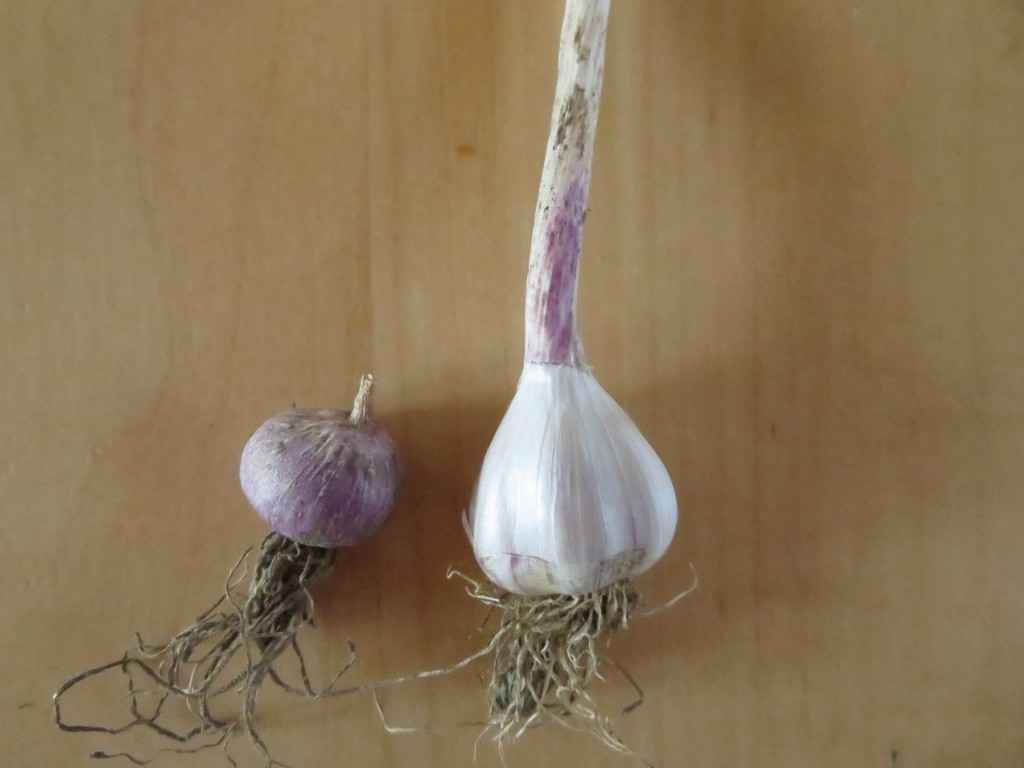
Re-plant the small radish size in the fall and it’ll grow into a small bulb, with individual cloves. Photo: Lucy Martin
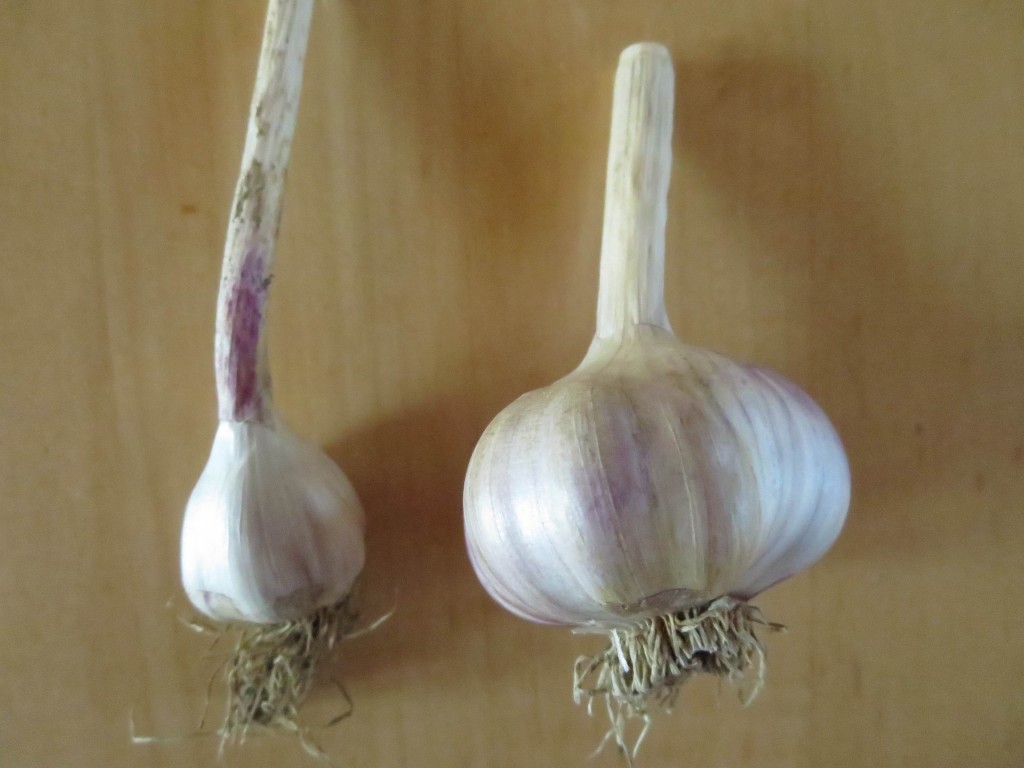
Divide the small bulb into cloves and plant them again to grow into regular bulbs. Photo: Lucy Martin
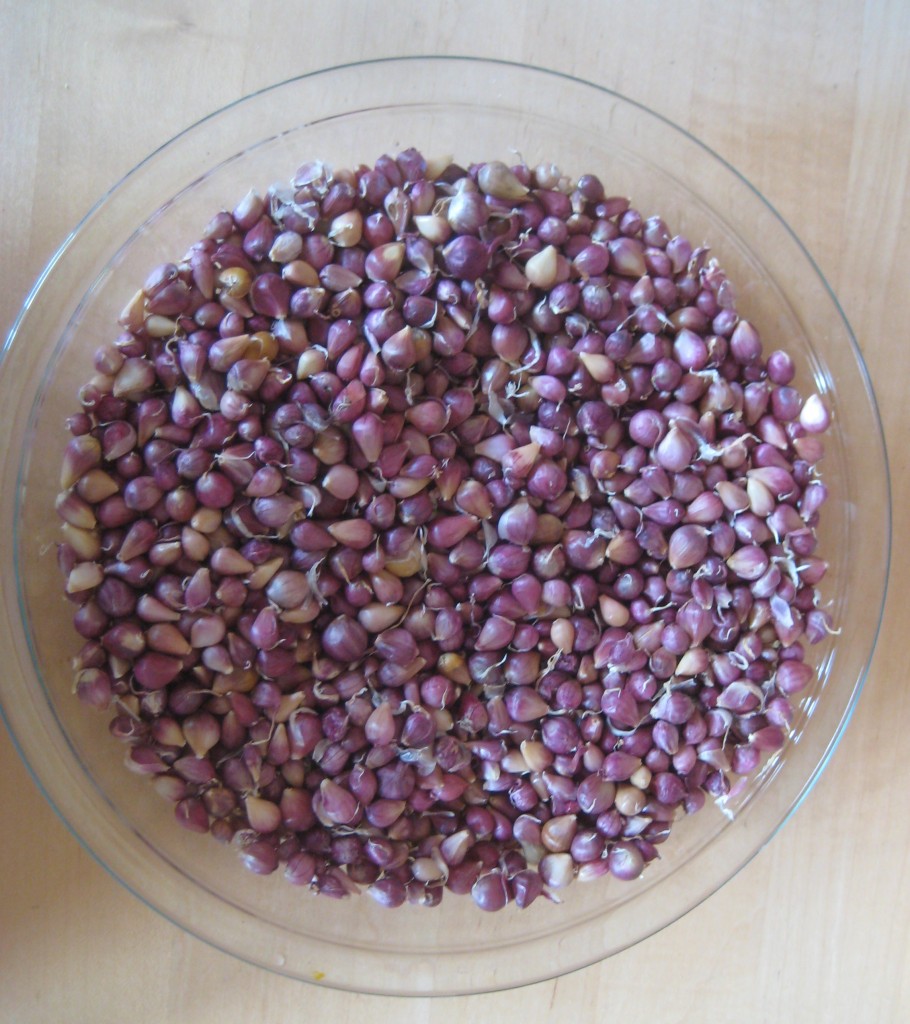
Got it? Each of these can be a big old bulb, in two or three growing cycles. With time, you’ll never be short on garlic again. Photo: Lucy Martin

Garlic comes in a wide array of varieties. Labels and clear separation will be essential to not get them mixed up. Photo: Lucy Martin
Tags: bulbils, canada, economizing, food, gardening, garlic, homesteading








Interesting. I always suspected something like this from garlic scapes but never put any research into it.
Also, I pulled my garlic the 3rd week of July (I’m down south in the south eastern Adk’s) and it was none too soon. Just a little south and east of me they are a week ahead of me and you are 2-3 weeks behind. Not really all that far in distance but a world of difference in gardening.
Question, Lucy: Does the bulbil generated garlic, even two cycles along, ever produce heads with large cloves? I really like the garlic that contains 4-6 large cloves and virtually no little cloves. I’ve found it stores better and it is so much easier to use.
That’s a good question Ellen. I haven’t gotten that far yet myself (proving the size will get back to big bulbs.)
But it stands to reason you will end up with what you started with, in term of the variety being grown. (Eventually, that is!)
So, if your bulbils are from large bulb garlics with just a few cloves, that’s what the bulbs will be again when you grow them back up to that size. (BTW, I am LOVING “Susan Delafield” for those qualities: big bulbs, just 4 cloves, amazing flavor.)
If I break up the 2nd cycle (small-ish) bulb right now for fall planting, the cloves are still (obviously) on the small size. By planting the biggest of those cloves (and eating the little ones) I think you’ll get there in the end.
There’s some old adage that one may have plenty of time, or plenty of money, but it’s difficult to have both at once. This falls into that category. With time this will provided an explosive increase in your stock – just not right away!
If you need full-size bulbs next year you’ll have to buy large bulbs to plant, or give up more of the large bulbs you were hoping to eat. (Aye, there’s the rub.)
This site lists varieties and sources for Canada: Seeds of Diversity.
Here’s a slightly similar site for the U.S., from Seed Savers.org
As readers may already know, garlic usually cannot be shipped across the border because it could carry soil-borne diseases or pests. There’s good information online at sites in either country, though.
I like the idea of using bulbils, but it seems like you are still getting exposure to soil born diseases in each of the two years that you re growing them in them ground. Am I mistaken about that?
I think that’s correct Shovel.
That is, the _first_ time you start with bulbils you’ll have planting material that is cleaner than bulbs lifted from the ground. (This being the actual bulbil, produced on the scape, which grew well above the ground.)
After that, and for each subsequent planting, it’s the same as conventional growing from cloves.
As mentioned earlier, check this page for a general over-view and yet another page for more photos of doing this.